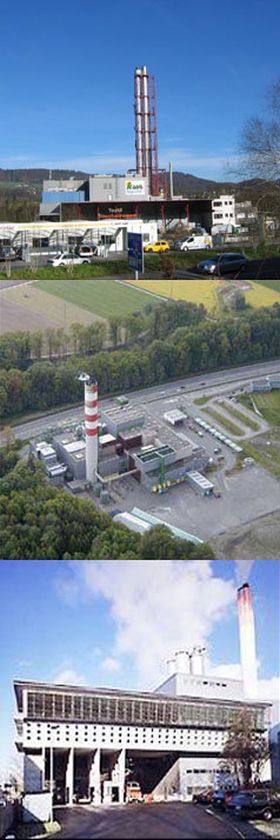Determination of biogenic vs. fossil CO2 emissions during waste incineration

Fossil fuel burning is the dominant factor leading to increasing atmospheric carbon dioxide (CO2) concentrations. Important industries, such as waste incinerators, co-incineration plants or cement kilns burn a mixture of biogenic and fossil fuel. The quantification of their respective contribution is highly relevant for emission budgets and emission trading.
Waste incineration is gaining importance in European countries, mainly because of environmental protection and resource management. In Switzerland, over 95 % of combustible waste is currently incinerated. This is of importance for the national CO2 inventory and, because these industries also produce electricity, which may be labeled depending on the fossil or biogenic nature of the primary energy source. While CO2 emission factors per ton of waste are readily available, the share of organic matter in municipal solid waste is usually a rough estimate only.
The most direct and accepted method to determine the biogenic content of waste or solid recovered fuel (SRF) is the 14C method which links the biogenic content of SRF to the age of the carbon released as carbon dioxide during combustion. It is based on the analysis of the radioactive isotope carbon-14 (14C, half-life: 5780 years) which allows a distinction of fossil carbon, in which the originally existing 14C is decayed, and modern (biogenic) carbon, which exhibits the current 14C/12C-Level. Thus the biogenic fraction is proportional to its 14C content and can easily be determined.
We have implemented a concept which is based on the collection of a representative exhaust gas sample from waste incineration and 14C analysis in combustion CO2, thus integrating over several hundred or even thousand tons of waste. This approach is superior to traditional waste analysis, and has been shown to yield excellent agreement with alternative methods. In the first long-term implementation of the radiocarbon method an average value of 48 ± 4%Fos C was determined for waste incineration in Switzerland. Significant differences between the plants in the share of fossil CO2 were observed, and variations can be explained by the waste composition of the respective plant.
References:
- Mohn, J., Szidat, S., Fellner, J., Rechberger, H., Quartier, R., Buchmann, B., Emmenegger, L., 2008. Determination of biogenic and fossil CO2 emitted by waste incineration based on 14CO2 and mass balances. Bioresour. Technol. 99 (14), 6471-6479.
- Mohn, J., Szidat, S., Zeyer, K., Emmenegger, L., 2012. Fossil and biogenic CO2 from waste incineration based on a yearlong radiocarbon study. Waste Manage. 32, 1516–1520.
-
Share
